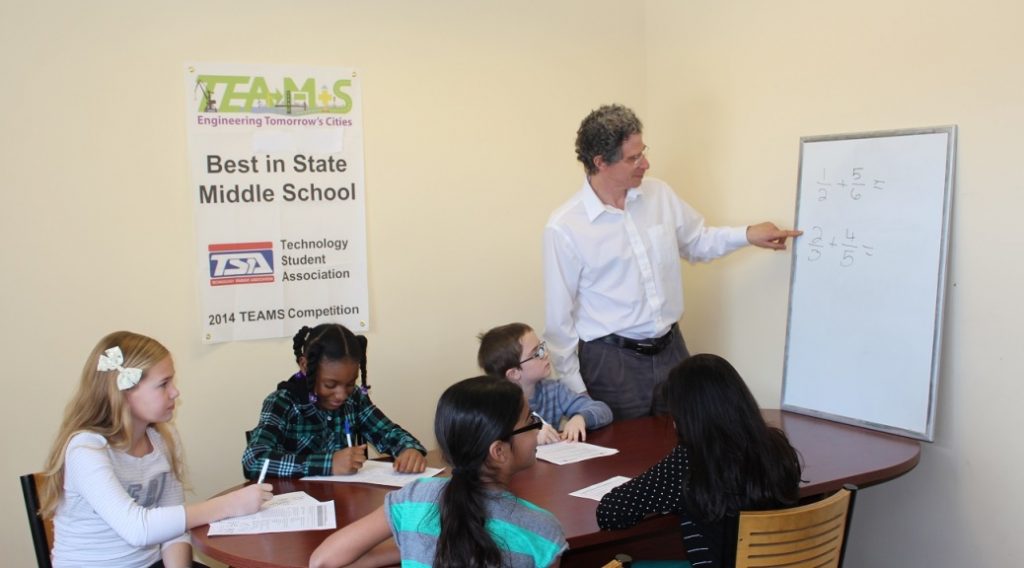How to Handle Time Pressure When Taking a Test
By Dr. John Leddo
Graduate of Phillips Exeter Academy and Yale University, owner of MyEdMaster, a tutoring company.
Many important tests that students take today are timed. These include the SAT, ACT, Thomas Jefferson High School tests, Academies of Loudoun tests, AP exams, CoGAT and NNAT, Iowa Algebra Aptitude Test, the various tests for post-graduate schools (GRE, MCAT, LSAT, GMAT) and even the essays for these various tests. Many students, while very knowledgeable about the subject matter they are being tested on, run into time pressure when taking these timed tests. This can be very stressful, causing students to panic, rush, second guess themselves, and ultimately achieve lower scores than what they are capable of achieving were the tests administered untimed. Below, I outline three strategies that students can use to help them cope with time pressure and achieve higher test scores.
The most common strategy that students are told for dealing with time pressure is to skip any questions they are unsure about and come back to them later. The wisdom of this strategy is that getting bogged down on a tough question can take up a lot of time and be one of the leading causes of time pressure to begin with. I teach students this strategy as well, and even go one step further. For example, many students report that a certain type of reading passage, such as fiction or history, give them trouble. I tell these students to skip those passages and do them last. I point out that those passages will take the most time and cause them to run out of time on later passages that they might otherwise do very well on. There’s no sense in spending a lot of time on a passage where you are likely to miss several questions anyway and then not have enough time for a passage that you would do well on.

The second technique for dealing with time pressure involves training students using a strategy called “above real time training” that was developed by the Air Force. You may be wondering what the Air Force has to do with helping students to well on timed tests. It turns out that fighter pilots deal with time pressure situations all the time. When flying a plane, a pilot is constantly being shot at by other aircraft as well as by folks on the ground shooting missiles at them. All of this is happening very fast and the stakes are very high. One mistake can be deadly. In order to save pilots’ lives, the Air Force does two things. First, the pilots are trained on very elaborate flight simulators. Obviously, these are much safer than training in real planes since no one dies from imaginary missiles. The second thing the Air Force does is use “above real time training.” Above real time training means that events on the simulator happen faster than they would in real life. This trains the pilot to make rapid decisions, so that when the real-life situation happens, events actually seem slower to the pilot than what he is used to and the pilot is better able to deal with the time pressure. I have adapted this technique to help students preparing for tests. Let’s say a student is studying for the SAT. The No Calculator math section has 20 questions and gives students 25 minutes to answer them. Suppose a student has trouble finishing on time. The first thing I do is see how long the student takes to complete the section when working at a his or her own pace. Let’s say that amount is 30 minutes. I first work with the student at a 30-minute time limit to build the student’s accuracy. Then, I gradually lower the amount of time the student has to complete the section by a minute at a time until the student gets down to 23 or 24 minutes without sacrificing accuracy. The key is that I don’t reduce the time limit further until the student shows he or she can perform at the current time limit without losing accuracy. The logic is that if a student can complete the section in 23 or 24 minutes, he or she can certainly do it in 25 minutes.
The third strategy for dealing with time pressure involves having the students pace themselves. One way that students fall into time pressure is that they take more time at the beginning of the test and then fall behind. This is easy to do because at the start of the test, it seems like there is plenty of time and no hurry. So it’s easy to take one’s time then and fall behind. One strategy I’ve used with students in these circumstances, which works very well, is to teach them to pace themselves. Let’s say a student is taking an SAT test. The reading section gives 65 minutes for 52 questions. These 52 questions are spread across 5 different passages. That means a student has an average of 13 minutes to read a passage and answer all of its questions. Therefore, I tell students to time each passage and finish within 13 minutes. It’s easier to pace oneself for 1 passage than it is for 5. By treating the reading test as 5 smaller tests, students learn to pace themselves, much the way distance runners (which I used to be) learn to pace themselves by laps or quarter miles.
Of course, these strategies can be used separately or in conjunction with each other. As with everything in life, different strategies may work better for different students. That’s why tutoring services such as MyEdMaster can be a useful partner to help students find the strategies that work best for them.
I am happy to help your kids get the highest test scores possible. You can visit www.myedmaster.com, contact me at john@myedmaster.com or 571-242-6986. Let’s build a success story together.
